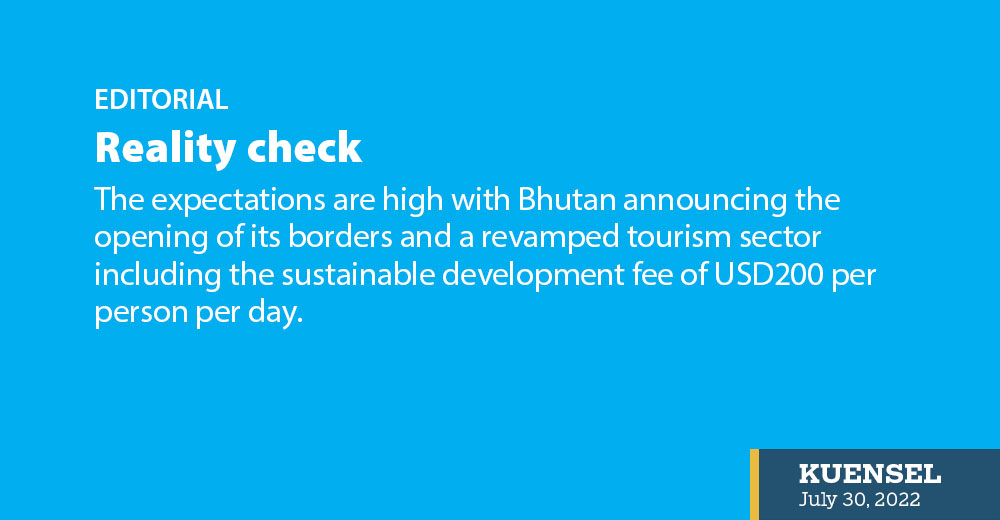The expectations are high with Bhutan announcing the opening of its borders and a revamped tourism sector including the sustainable development fee of USD200 per person per day.
Not many, except those in the tourism and allied businesses, are complaining about the rates. It has heightened the expectation of the visitors. They feel there is something special, something high-end to experience in the little hermit kingdom, as many call us.
With less than two months to re-open our borders to tourists, there is so much to do to live up to the expectation and not let the decision backfire. What is touted on paper and what is happening on the ground is not matching as of today. Those returning home and the few visitors are already complaining of services at the airport. This is bad.
For many, the Bhutanese experience begins at the airport. Physically, the Paro International Airport wears a new look. The airport has been transformed into a national aviation facility with a unique identity. The airport is an introduction to the country. The paintings, photographs, boutique shops, new furnishings and the corner where visitors can experience Bhutan by painting mounted traditional masks, postcards, and canvases as well as personal stamps gives visitors a whole new experience on arrival or while they wait to depart.
However, it is the time, the confusion and the bureaucratic procedures to get to the lounge and relax or get rid of the jetlag that many are not happy with. Going by the few complaints reaching the authorities, airport services are still disorganised. From not maintaining physical distances while waiting for service to having to run around to exchange a few hundred ngultrums and not organising the test and go facility, visitors are sceptical as to whether the high-end or high-value ambitions could be met.
After all the hype and the risks we are willing to take, the policy of high-value, low-volume should not backfire. That will be an embarrassment. If the intention is to let the benefits from tourism trickle down to all Bhutanese, we should improve our services.
The ground reality is a little different . Visitors are complaining about issues that we can resolve with or without much investment. If tourists concerned by the risk of Covid-19 have to fight crowds to get their papers done at the airport, it would be the first and last impression of their travel to Bhutan. If they have to remember the driver’s name and licence number, run from counter to counter to change USD10 to pay the test fee, they will regret coming.
If they can come out of the airport with some patience, it should not be tested by the pothole-ridden roads or lack of decent restrooms on the way to Thimphu or Punakha. After years of talking about investing in infrastructure, what we have, for instance between Paro and Thimphu, is a toilet that was built by a non-profit organisation.
Arriving in the capital city is a disaster. There are barking or fighting dogs to keep a tourist awake all night after a tiring journey on bad roads. There will be a few who would enjoy the difference, but many would complain for not having basic infrastructure in place. Some guides say that they have to drive tourists to the hotel just to use the bathroom because the public ones are in a terrible state.
There is time still and there are initiatives. Improving the trail to Taktsang monastery, building restrooms, and improving hygiene are some of the initiatives. This could help even if these are considered basic amenities in countries that do not charge anything to tourists for visiting their country.
If we are to live up to the expectations, there are many things to do. Time is running out.


